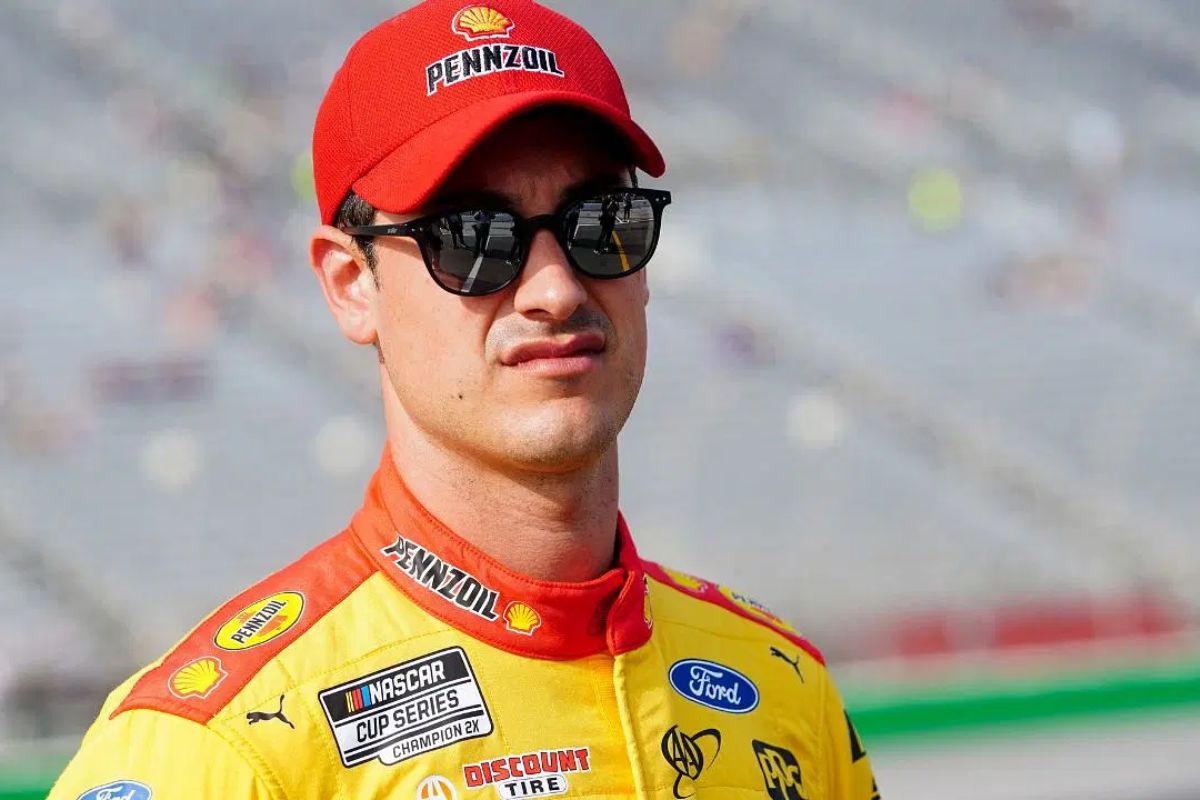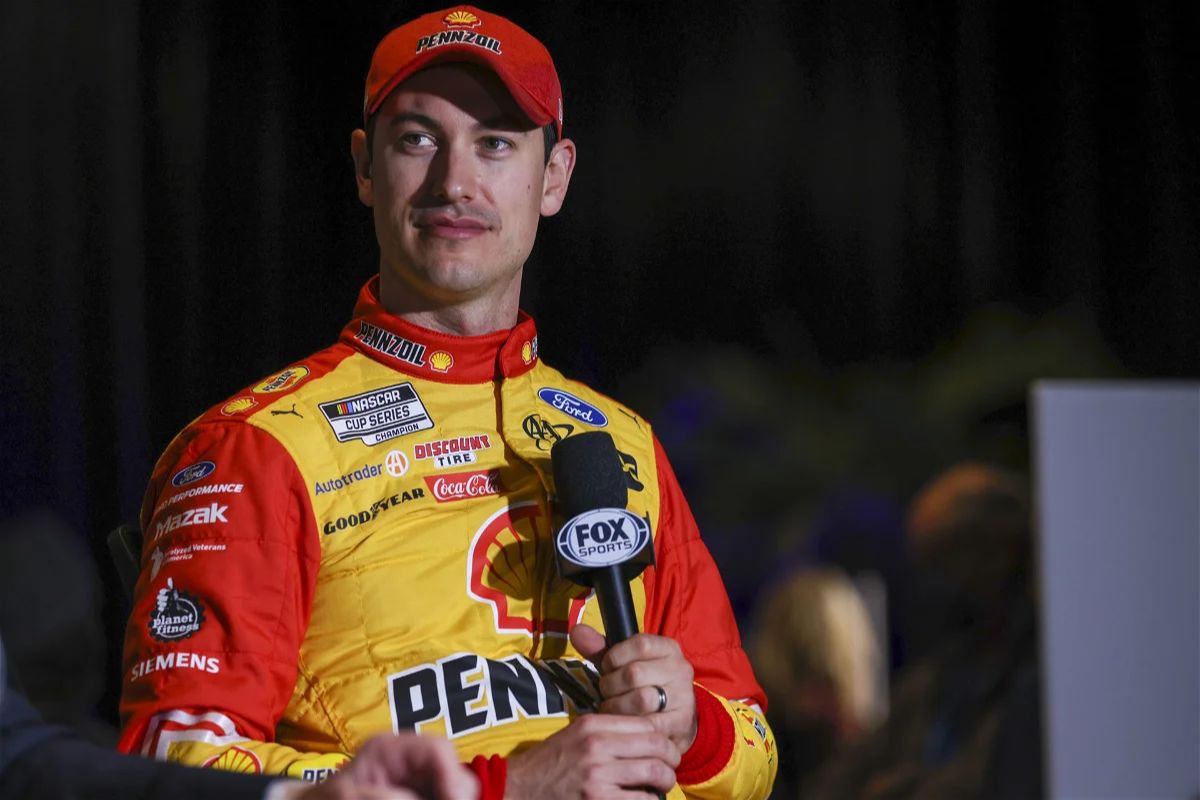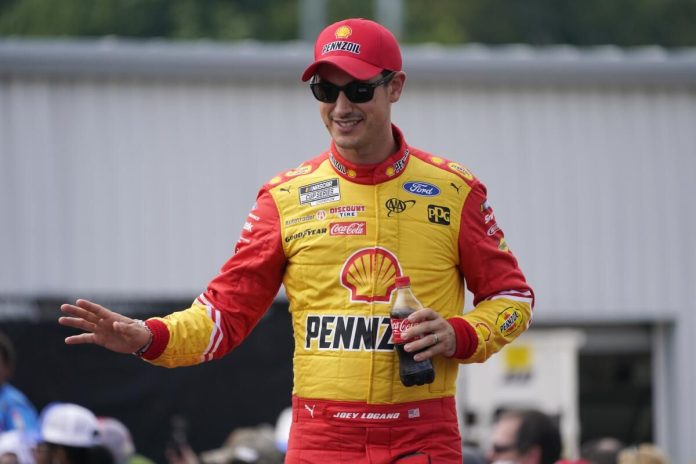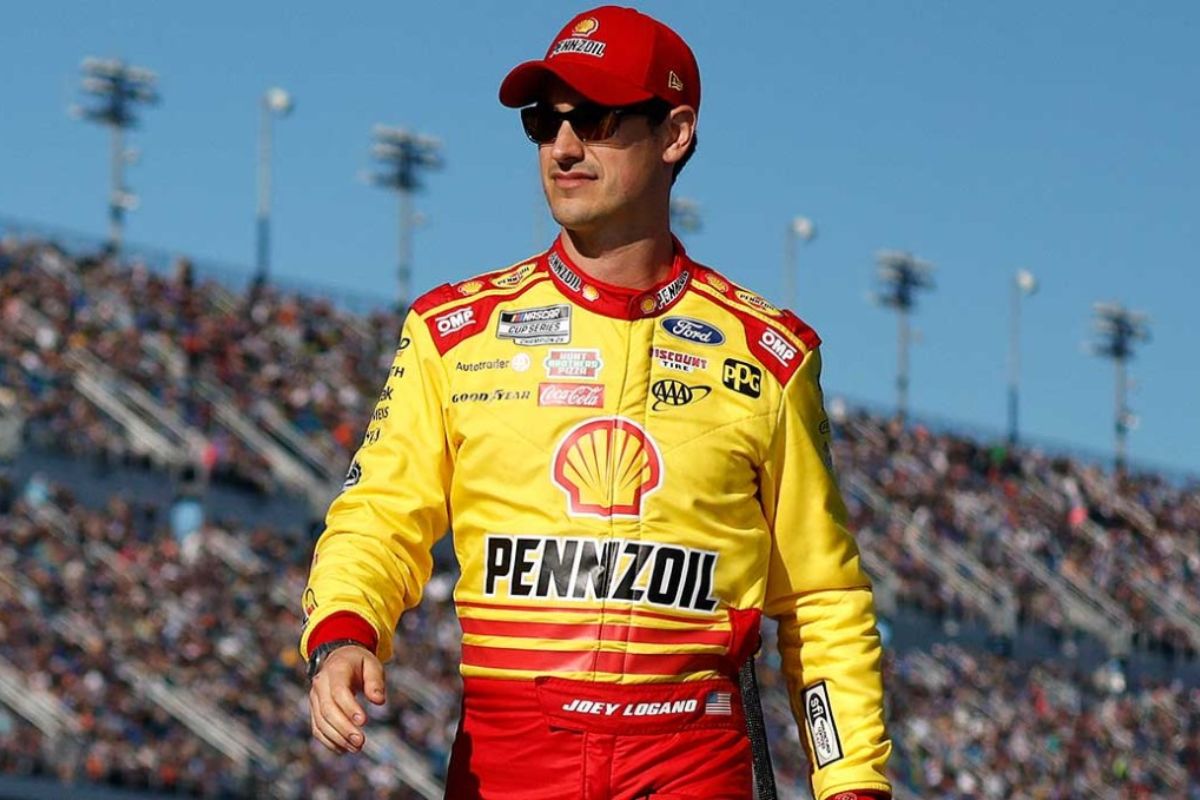Joey Logano’s Fuel-Saving Nightmare: Joey Logano’s mounting concerns about the Next Gen car’s fuel-saving requirements highlight a discontent within the NASCAR community. His recent comments shows the strategic dilemma faced by drivers at the superspeedways, where the excitement of aggressive racing is being overshadowed by the necessity for fuel conservation. This shift not only impacts race outcomes but also challenges the essence of motor racing itself.
Key Takeaways
- Joey Logano criticizes fuel-saving strategies at Talladega, impacting race excitement and driver skill display.
- Logano proposes a mandatory two-tire stop to improve race dynamics.
- Next Gen car introduction shifts focus from speed to strategic fuel management.
- Critics like Logano and Hamlin express concerns over diminished racing quality.
- Proposed changes aim to balance environmental considerations with maintaining race integrity.
Next Gen Car and Fuel-Saving Tactics
The introduction of the Next Gen car in 2022 dramatically altered superspeedway racing dynamics, compelling drivers to adopt fuel-saving strategies as a critical component of maintaining competitive track positions. This shift marked a distinct departure from traditional strategies that prioritized raw speed and aggressive overtaking tactics. The new car’s design inadvertently emphasized the importance of strategic fuel management over the sheer pace.
Drivers, adapting to this new reality, often operated their vehicles at only 50–60% throttle. This conservative approach was not merely a choice but a necessity dictated by the car’s performance characteristics on the superspeedway circuit. The Next Gen car, while groundbreaking in many aspects, presented a challenge in terms of speed retention and maneuverability in dense racing fields. Consequently, drivers and teams were forced to change their race strategies, focusing heavily on the optimization of fuel consumption to extend their range and preserve or improve their positions without the need for additional pit stops.
Outcry from Drivers and Fans
Frequently, the aggressive fuel-saving strategies employed at Daytona and then at Talladega Superspeedway sparked significant frustration among both fans and seasoned drivers. Denny Hamlin, a veteran in the sport, articulated the collective disappointment, pointing out that the spectacle of racing was being overshadowed by tactical fuel conservation. This sentiment reverberated across the community, indicating a profound discordance between the racing strategies encouraged by the new regulations and the expectations of the competition cherished by the audience and participants both.
The evolution of these strategies, while technically intriguing, has shifted focus from aggressive, competitive racing to a more calculated, endurance-style approach that might not resonate with the traditional NASCAR fanbase. This strategic pivot raises questions about the balance between innovation in automotive technology and maintaining the core elements that have historically defined stock car racing.
Joey Logano’s Perspective
Joey Logano, during a Sirius XM NASCAR episode, shared his critical view on the prevalent fuel-saving strategies, emphasizing the severe limitations they impose on competitive racing at events like the GEICO 500 at Talladega Superspeedway. He expressed concern that these tactics not only diminish the quality of racing but also prevent drivers from fully showcasing their skills and strategies during pivotal segments of the race.
“To me, the issue is, you can’t move through the field. You can’t pass cars. And so I was scared to pull out of line because it’s just, like, getting in the wall…like getting in a brick wall, and all of your moves stop.”-Logano
Logano’s perspective highlights a fundamental issue with the current racing format, where the emphasis on conserving fuel can lead to a less dynamic and engaging spectacle for fans. He illustrated this by comparing the experience of trying to advance through the field to ‘hitting a brick wall,’ a metaphor that vividly captures the frustrations drivers face under these conditions.

Logano’s Solution and Rejection of Shorter Stages
While addressing the challenges of fuel-saving strategies, Logano offered a specific countermeasure involving a mandatory two-tire stop during each race stage.
“The fuel mileage game, I don’t know how that goes away. The only way to me that goes away, is if you put a mandatory two-tire stop within the stage. Because then you’re not waiting on fuel anymore…That’s about what it would take if you were wide-open and put two tires on, give or take.”
“But going wide open is not more interesting to me. I think the fuel mileage game is more interesting than when they were wide open, in my opinion.”-Logano
- Improved Race Dynamics: By mandating a two-tire stop, races would potentially feature more pit-stop strategy, leading to varied race tactics and potentially less predictable outcomes.
- Consistent Racing Intervals: This method eliminates the need for additional stage breaks, thereby preserving longer racing periods and allowing drivers to demonstrate their skills over extended runs.
- Focus on Skill Over Conservation: Reducing the emphasis on fuel saving shifts the focus back to racing skills and strategic overtaking, elements that are core to motorsport allure.
- Preservation of Race Length: Unlike proposals that involve shortening the race stages, Logano’s method maintains the traditional race format, which is favored by a significant portion of the fan base.
However, Logano rejects the idea of shortening stages, a concept proposed by others like Dale Earnhardt Jr., as he believes that adding more stages does not address the underlying issue of strategic fuel conservation.
“To take fuel mileage out of the equation, you need to have the stages short enough so that they can run the entire stage on one tank.”-Dale jr
Instead, Logano advocates for solutions that enrich the race’s competitive nature without altering its foundational structure.
“That’s the only thing I can come up with without adding stages, and I heard all of the other stuff people talked about. I don’t think you should add stages.”-Logano
Potential Solutions from NASCAR
NASCAR’s exploration of innovative approaches is vital in developing a response to the significant issues of fuel conservation that have influenced race dynamics. The ongoing challenges faced in the Daytona 500 exposed the critical need for adjustments in the competition’s structure and rules that govern fuel usage.
By changing the amount of fuel allowed per race, NASCAR could strategically induce more frequent pit stops. This change would not only address the fuel-saving strategy but also add tactical complexity to races, potentially leading to a more dynamic and unpredictable event. Additionally, adjusting the refueling regulations to allow smaller, more frequent refueling could maintain the competitive nature of the sport while addressing safety concerns related to fuel conservation tactics.
Technological advancements present another avenue for solutions. Implementing more sophisticated fuel monitoring systems could provide teams and drivers with real-time data to optimize their performance without compromising the race’s integrity.

News in Brief: Joey Logano’s Fuel-Saving Nightmare
The mounting frustration among NASCAR drivers, highlighted by Joey Logano’s criticism, emphasizes the crucial balance that must be achieved between environmental sustainability and the integrity of competitive racing. Logano’s suggestion for a mandatory two-tire stop presents a potential solution to reduce fuel-saving strategies that diminish the sport’s dynamism.
NASCAR must take such feedback seriously to improve race quality and retain its fan base, thereby ensuring the sport remains thrilling and environmentally conscious.
Our Reader’s Queries
Q: Is Joey Logano balding?
A: In a surprising turn of events back in 2019, NASCAR champion Joey Logano returned home from a routine haircut, only to receive unexpected news. His wife, Brittany, greeted him with surprise, revealing that he had been diagnosed with Alopecia Areata, resulting in baldness.
Q: Does Joey Logano have an illness?
A: A few years ago, the two-time NASCAR Cup champion received a diagnosis that changed his perspective. Noticing bald spots on his head led to the discovery of an autoimmune disorder called alopecia.
Q: Has Joey Logano ever won?
A: The winner of the inaugural Cup Series race at Gateway in 2022 and the inaugural Bristol Dirt Race in 2021, boasting five appearances in the NASCAR Championship Four (2014, 2016, 2018, 2020, 2022), with 32 career NASCAR Cup Series victories as of 2024.
Also Read: Joey Logano Exposes Goodyear’s Bristol Secret: Unbelievable Findings Inside!



